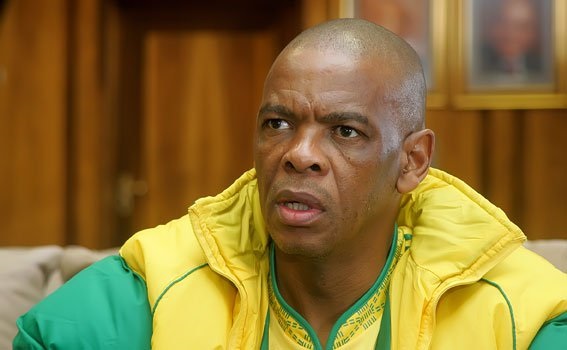
While inflation is under control, ‘printing money’ would be a way for us to lose control over the direction of inflation and the value of the rand, writes Lullu Krugel.
Quantitative easing (QE) became a much-debated topic in South Africa earlier this month, when ANC secretary-general Ace Magashule announced after a lekgotla that it would now be considered as a tool to stimulate the South Africa economy.
With the economy contracting by 3.2% in the first quarter of 2019 and with unemployment currently at 27.6%, it is clear that we need a boost in some way or another.
We have a range of economic challenges, including creating policy certainty and addressing corruption and governance.
However, let us go back to basics for now: policymakers have a choice between expansionary fiscal policy or expansionary monetary policy, or a combination of the two, when considering traditional stimulus tools.
Any fiscal stimulus in the form of increased government spending or tax cuts seems to be all but impossible, given the size of the budget deficit, forecasted by National Treasury to reach 4.5% by 2020/21, and with the debt to GDP ratio exceeding 60%.
On the possibility of tax cuts (or incentives), it is a potential mechanism to consider, especially for company taxes.
However, given the tax collections shortfall for the 2018/19 fiscal year of just short of R60 billion, it is a highly unlikely option.
The sudden interest in and focus on the SA Reserve Bank (Sarb) and its monetary policy mechanisms as a potential source of stimulus for the economy are therefore not surprising.
One of the mechanisms apparently being considered, depending on who you talk to, is QE.
Variations of it were implemented in the 1930s, after the Great Recession.
The more modern incarnations of it, however, can be traced back to 2001, when the Bank of Japan decided to flood commercial banks with excess liquidity to promote private lending.
Given the relative scarcity of examples of the implementation of QE before 2001, it was considered to be an unconventional monetary policy tool.
From 2007 onwards, in the wake of the global financial crisis, QE became a frequently used tool with various central banks, including the European Central Bank, Federal Reserve and Bank of England, introducing it as an economic stimulus measure.
The economic circumstances under which QE was implemented in these countries were similar: short-term interest rates were reduced to close to zero and inflation rates also hovered around zero, threatening to move to deflation.
The central banks had to come up with alternative ways to increase activity in these economies.
Through buying back assets such as government bonds from businesses and banks, more money would be available to provide credit to private households or businesses, or to invest in productive capacity in the economy.
The funding for QE came from central banks adding zeros to their balance sheets. QE is, therefore, in short, an electronic way of printing money.
In fact, the former Federal Reserve chairperson, Ben Bernanke, was referred to as “Helicopter Ben”, for his ability to make money appear from the sky.
In the years following the global financial crisis, these positions have not been unwound completely, and some central banks still have QE in their arsenal of expansionary monetary policies.
It is, however, still a monetary policy tool that generates emotive reaction from the public, economists and policymakers alike.
In the US, one of the criticisms has been that only a small portion of the money has made it back into the hands of business or consumers, with the largest portion ending up at the Fed in the form of reserves.
In the UK, the feeling is that leaving QE to solve the liquidity problems has done little to address challenges in the real economy, such as the availability of finance for small and medium-sized enterprises.
In Japan, the jury is still out on whether QE has done anything to address stagnating economic growth.
Conversely, the strong growth in asset values, jobs and the overall economy in the US following QE can not be ignored and, in the EU, the alternative could well have been deflation.
QE has provided more liquidity in the economies where it has been implemented.
It managed to bring down the cost of borrowing in the form of lower government yields as demand for government bonds resulted in increasing asset prices.
It also resulted in a steady return in confidence in financial markets and initiated growth again in some of the largest economies in the world.
That sounds like a good recipe for South Africa, does it not? No, and here is why: South Africa does not currently experience the risk of deflation.
While inflation is well under control, “printing money” can certainly be a way for us to lose complete control over the direction of inflation, as well as the value of the rand.
In addition, short-term interest rates are nowhere near zero, in both nominal and real terms.
The Sarb therefore still has room for movement when considering its traditional options.
A more fruitful debate will be how much we can cut interest rates without it becoming a risk to inflation or the currency.
The repo rate (the rate at which a central bank lends money to commercial banks) is a known entity in South Africa when it comes to monetary policy instruments.
In addition, South African businesses (at least, the larger ones) are not experiencing a liquidity crisis. They are experiencing a confidence crisis due to continued policy uncertainty.
The public spat about the Sarb’s mandate is not helping either.
Does QE not provide us with the possibility of lower government borrowing costs?
The markets are keeping the South African government in check at the moment, making us think hard about how and for what purpose we need to take on debt.
Artificially creating space for unchecked borrowing is perhaps not a wise decision, given our track record of managing government debt and state-owned enterprises.
We should perhaps focus on sorting out the real source of our economic woes, rather than trying to keep bad habits alive through artificial means.
Krugel is the chief economist for PwC in South Africa, and a partner in its strategy and business unit




 Publications
Publications
 Partners
Partners








